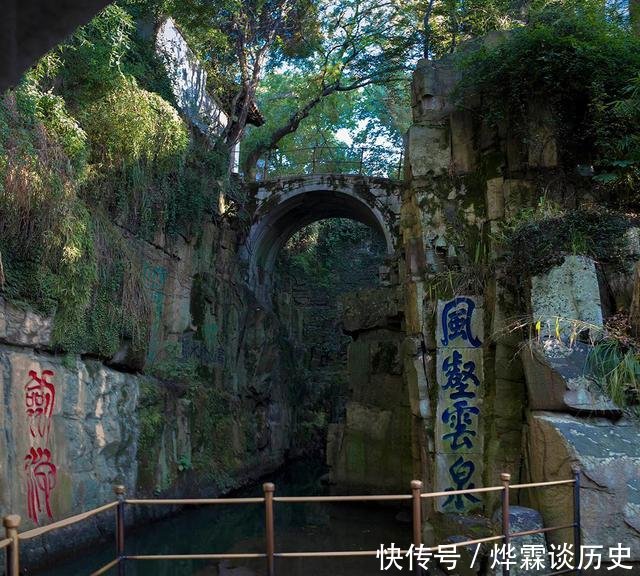半年前寫了這首:
《虎丘》(Memory of Tiger Mount)
記憶裏的小男孩
在哭:那座無救的林子,父親。
其實虎丘不是一座林子
而是一處盆景,灰色白色黑色的
大石頭,石亭,石徑,石橋
灰綠的樹,當然還有一些遊客
父親說是布局擺放了它們
但也許是說它們擺放了布局
主語和賓語那時,可以時常被互置的
虎丘的後部高聳一座巨石
中間開裂一道深澗,頂上架著一座小木橋
抬頭望著遊人橋上走,恐懼抓住我的心:
父親,虎丘有年代了,木橋定已腐朽
是的孩子,萬物都會腐朽,直至塌廢
晚上我為一個人悲傷著,總會有這麽個人
像最後一根稻草
壓塌了木橋,墜落深淵
木橋受風雨侵蝕,受萬人踐踏和搖動
就是為了把概率磨得越來越薄
砍向
這棵無辜而不幸的稻草
稻草會很快被遺忘
甚至被埋怨為破壞者
為何這般體重,為何背著包袱
為何站在橋上看風景,為何踩著舞步
稻草鮮有可能
被稱為一個殉道者,舍身救了身後某個人
並讓道上有了一座新橋
沒錯,主語和賓語並不重要
我們都參與了布局
從而我們又都被布局其中
沒有一個人是有罪的
隻有一個人是不幸的
其他人合起來,都隻是證明木橋有多好
都隻是在推高條件概率的賭注
即使今天,隻要想到一棵稻草的殉道
我也會流淚的
"Memory of Tiger Mount"
The little boy in my memory
Was crying - how hapless this garden is, Father.
Tiger Mount was not really a garden
But a bonsai, composed
Of grey, white, and black boulders, a pavilion, a footpath, and a small bridge, all crafted from stone
Of course, there were greenish trees and sightseers as well
"It's the layout that set them out," said Father
Or perhaps what he said was, "It's them that set the layout?"
Objective and subjective, back then,
Were often interchangeable
The rear of Tiger Mount was a towering rock
Split in the middle, forming an abyss
At the top, a small wooden bridge crossed over it
Looking up at the sightseers on the bridge, fear enveloped me
"Father, Tiger Mount is so antiquated that the bridge
Must be decaying "
"Son, everything is destined to rot, to eventually collapse," said Father
That night, I was overwhelmed by sadness for a person
There must be such a person, like the last straw,
Who would cause the bridge to collapse and plunge into the abyss
The bridge, weathered by wind and rain,
Weakened by the trampling of thousands
Merely to sharpen the blade of probability
And to slash it to the innocent straw
The straw will soon be forgotten
Perhaps even labeled a saboteur
Being so burdened, carrying a backpack Standing on the bridge, or
Moving in dancing steps
Seldom will the straw be called a martyr
Because salvaging someone follows behind, and
Bringing forth a new bridge
Indeed, objective and subjective hold little significance
We have all played a part in shaping the layout
And in turn, we have been molded by the layout
There is no one to have sinned
But only one to have been doomed
The rest combined is just to prove how good the bridge is
Just to push up the bet
Of the conditional probability
Even today, the mere thought
Of the martyrdom of a straw
brings tears to my eyes
昨天收到一親朋遊蘇州虎丘照,不覺一頓,咦,這劍池上的橋怎麽是石橋而不是木橋?上網搜了下,確實照照都是石橋(譬如下麵這張),果真是塌了重建,還是什麽時候改建的?要不我的記憶出了偏差?
童年隨父遊虎丘,這道塹這座橋貢獻了我好長一段時間的憂鬱和恐高,很難想象一座與山岩砌成一體的墩墩實實的石橋會造成這般心理效應。明明記憶裏,是一板平平的暗紅色木橋擱在塹壁兩端。

一不做二不休繼續搜,照沒有卻碰到這文“虎丘,吳中第一名勝”,裏麵匆匆一筆:“雙井橋橫架在劍池上部的兩側石壁之間,初建於南宋時期,原來是木橋,後來改成了石橋。”還有這篇"蘇州的古橋“ 一錘定音 ”蘇州的古橋,在唐代的時候大多為木製,木梁木欄木橋麵,一色朱紅油漆,......可惜木製的建築禁不住千年的風吹、日曬和雨淋,......在曆史的變遷中,許多木橋已不複存在,保留下來的古橋大多都是石橋。......比較好玩的橋,是虎丘的雙井橋。橋高架在劍池上,一對俗稱“雙吊洞”的石圈井並排在青石橋麵中央,朝井下望去,池水深幽,目迷神搖。" 得,橋麵上的雙吊洞石圈井妥妥說明這是古石橋。當年由於恐懼澗的陰森和橋的高聳,我肯定沒上過橋,並不知有石井圈這回事。
但是我童年的視力不差,記憶更好得出奇,沒錯,帶給我憂傷的是一座木橋,木橋。不管何年何月,它曾是一座木橋。
不管如何,我依然為那個人憂傷,他/她走上這座搖搖欲墜的木橋,或出於無奈,或出於無知,抑或隻是鋌而走險,然後腳下陷了下去,隨著一大堆朽木墜入深澗。
曆史總是這樣,事物的崩塌,總需要一個或一些人在其中扮演悲劇的主角兒。
忽然想到四通橋,當然這是完全無關的。




